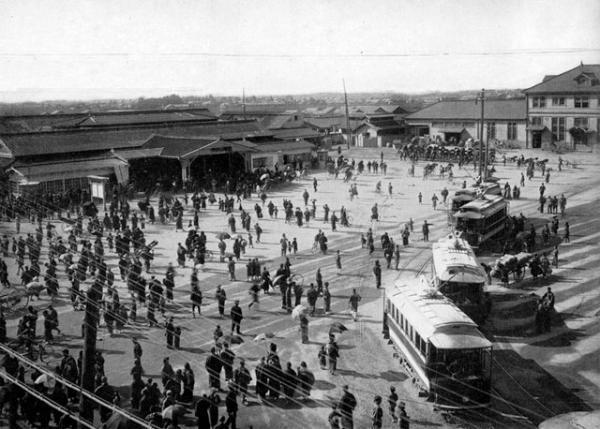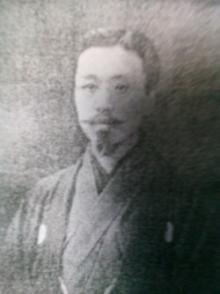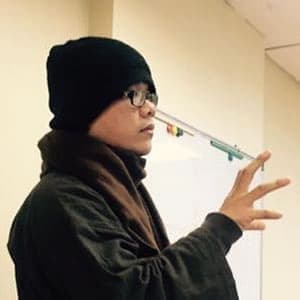在臼井甕男之前的靈氣 Reiki Before Usui
靈氣誕生在一個靈術盛行的時代 | 2021.08.13

在臼井甕男之前的靈氣 Reiki Before Usui
威廉·李連 William Lee Rand
這篇文章是一系列文章的一部分,這篇文章發表在 2013 年秋季《靈氣新聞》雜誌上“靈氣歷史的循證研究(An Evidence Based History of Reiki)”中描述的歷史研究方法。目的是消除有關靈氣歷史中的傳說,這些傳說最初出現在西方靈氣中並從那時起發展。對靈氣的理解基於經過驗證的事實是很重要的,這樣才能理解、欣賞和實踐靈氣的真實本質。
靈氣社群的許多人認為靈氣是臼井甕男老師開創的東西,這個詞應該只應用於他的治療系統。但即使是對歷史證據的粗略檢查也表示,在臼井老師使用靈氣這個詞之前很久,它就已經在日語詞典中出現了。此外,在臼井靈氣被開發之前,還有其他治療系統也存在,並使用靈氣這個名字或能量。顯然,靈氣這個名字其實並不是臼井靈氣獨有的名字,而是可以應用於任何使用靈氣能量的治療方式。
日語的簡史
直到公元 7 世紀文字變得普遍時,日本人才擁有文字。(1) 日文發展的書寫系統是基於中國文字。這種漢字系統最早是在公元前 1200 年左右發展起來的,並在漢朝(公元前 206 年至公元 220 年)期間標準化,產生了日語中所稱的漢字。正因為如此,許多日文和中文的概念都是用相同的字符書寫的,這使得日本人可以理解中文書寫,反之亦然。用於 rei 和 ki 的漢字表意文字在這個時候傳入日本。在漢語中,靈氣的文字分別發音為 ling 和 qi,其含義與日語中的相似。這表明靈氣的根概念已有幾千年的歷史。(2)
目前尚不知道 Rei 和 Ki 是什麼時候結合在一起形成一個詞的。需要進一步研究以確定日期和使用方式。但目前的理解是,它是在日語書寫的發展之後、到臼井老師使用之前的某個時間。
以下是日本現代靈氣法創始人、臼井靈氣學會成員 土居裕老師所提供的靈氣漢字各部分的定義:
靈 rei 的漢字有 3 個部分;一雨三口一巫。
1)雨,是來自大宇宙的祝福。它從上空傾瀉而下,讓生命在地上生長,治愈和淨化一切。
2)三個正方形(原為圓形)表示人的三要素;身體、思想和靈魂。
3) 巫指巫女,傳達神的旨意,她的使命是連接天地。
也就是說,靈的本義是大宇宙與人的合一。
氣的漢字分為兩部分。
1.气,據說是由蒸汽或云的形狀形成的。
2. 另一部分,米,讀kome,意思是大米之類的主食。
氣又代表沸騰蒸汽的能量,將煮飯鍋的沉重蓋子推開。
中國古代將人的呼吸、風(自然的呼吸)、霧、雲和蒸汽視為氣。 他們認為 1) 氣是一種千變萬化的氣態物質,它無處不在,在宇宙中到處流動,包括在人體中。 2) 氣是宇宙萬物的本源,是創造我們身心功能之生命力和能量之源。
因此靈氣靈氣是由大宇宙(智慧和愛的宇宙存在)引導的生命能量,它可以被特殊能力的人所引導並使用。
在我於 2013 年 9 月 29 日收到的一封電子郵件中,土居裕老師說他曾擔任日本全球整體治療協會(Global Holistic Healing Association in Japan)的名譽顧問,該協會是一個練習臼井靈氣的組織。 Katsuyuki Takashahi 是一名支持成員,他撰寫了一份名為 Holistic Healing 的時事通訊。在 2003 年 2 月的時事通訊中,他附上了一篇關於 川上又次( Mataji Kawakami )的筆記,他是一位 靈術家 和 日本心象学会 的會長。

川上又次( Mataji Kawakami )
1914 年,川上創立了一種他稱之為 霊気療法 的治療方法。他有當時的醫學和教育專家去認可了霊気療法這個詞,並寫了一本名為《靈氣療法及其效果/霊気療法とその效果》的書,於1919年出版。
根據土居裕老師和另一位受人尊敬的日本靈氣老師和作家望月俊孝的說法,在臼井靈氣療法 出現之前,日本還有其他幾種靈氣治療方法正在實踐中。其中包括:石抜霊覚 創作的 霊感透熱療法(Reikaku Tonetsu Ryoho)、 松原皎月創作的 洗心流霊気療法(Senshin-ryu Reiki Ryoho)和 大山霊泉 創作的生道霊掌術(Seido Reisho-jutsu)。(3)
同樣重要的是要注意臼井甕男老師並沒有將他的系統稱為靈氣治療; 他將其稱為「心身改善臼井靈氣療法」 或簡稱為臼井靈氣療法。 這表示臼井老師明白他所發展的是他的靈氣治療系統,而不是唯一的系統。
所以從這些信息中我們可以看出靈氣並不是一個只適用於臼井老師開發的治療系統的名稱,而是可以被任何使用靈氣能量的治療系統使用。
靈氣能量的定義
那麼什麼是靈氣能量,我們如何識別它? 在我與 Arjava Petter 和 Walter Lubeck 於 2001 年出版的《靈氣之靈/The Spirit of Reiki》一書中,第 22 頁有靈氣的定義。它解釋說,靈氣是滿足以下四個標準的任何治療能量:
1. 執行靈氣的能力來自於接受了點化/靈授(attunement),而不是通過使用冥想或其他練習隨著時間發展的能力。
2. 所有靈氣技法都來自於傳承,這意味著該技術已經從其創始人開始通過點化/靈授(attunement)的儀式從老師傳給了學生,。
3. 靈氣不需要用頭腦來引導能量,因為它是由更高能量所引導的,且能量自己會知道客戶需要的振幅與頻率。
4. 靈氣無害。(4)
我希望這能讓你更好地理解和欣賞靈氣。 我鼓勵您更頻繁地使用靈氣,為自己和向您尋求幫助的人帶來快樂和治愈。 願你永遠被宇宙的愛和智慧所祝福。
這篇文章出現在靈氣新聞雜誌 2014 年春季刊上。
參考資料:
1 Bjarke Frellesvig, History of the Japanese Language (Cambridge, UK: Cambridge University Press, 2010) 12.
2 Noriko Kurosawa Williams, The Key to Kanji, A Visual History of 1100 Characters (Boston, MA: Cheng & Tsui Company, Inc, 2010) 1; P. G. O'Neill, Essential Kanji (New York: Weatherhill, Inc, 1973) 44, 189.
3 Email communication received November 10, 2013 from Doi Sensei through his interpreter, Fumi Koji; Toshitaka Mochitzuki, Iyashi No Te (Healing Hands), (Tokyo, Japan: Tama Shuppan, 1995).
4 Walter Lubeck, Frank Arjava Petter, and William Lee Rand, The Spirit of Reiki (Twin Lakes, WI: Lotus Press, 2001) 22.
延伸閱讀:
《土居裕老師的采訪》
《高田女士的靈氣講義》
《大師訪談:現代靈氣法 土居裕 》
《大師訪談:聖火靈氣 威廉.李連》
《Reiki的原點「傳統靈氣」的歷史資料》
《你學的真的是靈氣嗎?》
Reiki Before Usui
by William Lee Rand
This article is part of a series of articles based on the historical research methods described in the article, “An Evidence Based History of Reiki,” which appeared in the Fall 2013 issue of Reiki News Magazine. The purpose of these articles is to dispel the myths about the history and practice of Reiki that first appeared in Western Reiki and have developed since then. It is important that an understanding of Reiki be based on verified facts so that its true nature will be understood, appreciated and practiced.
Many in the Reiki community think that Reiki is something that Usui Sensei developed and that the word should only be applied to his system of healing. But even a cursory examination of the historical evidence reveals that the word Reiki had been in the Japanese lexicon long before Usui Sensei used it. Furthermore, there were other healing systems in existence before Usui Reiki was developed that used the name Reiki and/or used Reiki energy. Clearly, Reiki is a name that isn't exclusive to Usui Reiki but can be applied to any style of healing that uses Reiki energy.
History of the Japanese Language
The Japanese did not have a written language until the seventh century AD when writing became widespread.(1) The system of writing that was developed was based on Chinese ideograms. This system of Chinese characters were first developed around 1200 BC and was standardized during the Han Dynasty (206 BC – 220 AD) resulting in hanzi or kanji as they are called in Japanese. Because of this, many Japanese and Chinese concepts are written using the same characters, making it possible for the Japanese to have an understanding of Chinese writing and vise versa. The hanzi ideograms for rei and ki were introduced to Japan at this time. In Chinese these ideograms are pronounced ling and qi respectively and have similar meanings as they do in Japanese. This indicates that the root concept for Reiki is several thousand years old.(2)
It is not known exactly when Rei and Ki were joined together to form a word; further research is necessary to determine the date and how it was used. But current understanding is that it was sometime after the written Japanese language developed and before it was used by Usui Sensei.
The following is a definition for each of the parts of the Reiki kanji provided by Hiroshi Doi, Japanese Gendai Reiki Ho founder and member of the Usui Reiki Ryoho Gakkai:
The Kanji of 靈 rei has 3 parts; one 雨, three 口and one 巫.
1) 雨 ame (rain), is a blessing from the Great Universe. It showers down from the sky above, allows living things to grow on the ground, and heals and cleanses everything.
2) Three squares (originally circles) mean the three elements of a human being; body, mind and soul.
3) 巫 means 巫女 (miko) medium who channels God’s will and her mission is to connect heaven and earth.
That is to say, the original meaning of 靈 is the unity of the Great Universe with a human being.
The Kanji of 氣ki is divided into 2 parts.
1. 气, which is said to be formed from the shape of steam or a cloud.
2. The other part, 米, read kome, meaning a staple food like rice.
氣 represents the energy of boiling steam that pushes up the heavy lid of a pot of cooking rice.
The ancient Chinese recognized human breathing, wind (breathing of nature), fog, cloud and steam as 氣. They thought that 1) 氣 is an ever-changing, gaseous material that is ubiquitous and flows everywhere in the universe including in the human body. 2) 氣 is the primal essence of everything in the universe and it is the source of life force and energies that create our physical and mental functions.
Therefore 靈氣 Reiki is the energy of life that is being guided by the Great Universe (the Universal Being of Wisdom and Love) and can be channeled by those who have received this special ability.
Mataji Kawakami
Mataji KawakamiIn an email I received September 29, 2013, Doi Sensei said he had been an honorary adviser for the Global Holistic Healing Association in Japan, an organization that practiced Usui Reiki. Katsuyuki Takashahi was a supporting member who wrote a newsletter called Holistic Healing. In the February 2003 issue of the newsletter he included a note about Mataji Kawakami, who was a Ryojutsu-ka (therapist) and president of Trinity Research. In 1914, Kawakami founded a healing practice he called 霊気療法 Reiki Ryoho. He had the term Reiki Ryoho recognized by the medical and educational experts of the time and wrote a book titled, Reiki Ryoho to Sono Koka, 霊気療法とその効果 , Reiki Healing and its Effects, which was published in 1919.
According to Doi Sensei and Toshitaka Mochizuki, another esteemed Japanese Reiki sensei and author, there were several other Reiki healing methods being practiced in Japan prior to Usui Reiki Ryoho. These include: 霊感透熱療法 Reikan Tonetsu Ryoho created by Reikaku Ishinuki, 洗心流霊気療法 Senshin-ryu Reiki Ryoho created by Kogetsu Matsubara and 生道霊掌術 Seido Reisho-jutsu created by Reisen Oyama.(3)
It is also important to note that Usui Sensei didn't call his system of healing Reiki; he called it Shin-shin Kai-Zen Usui Reiki Ryoho (The Usui Reiki Treatment Method for Improvement of Body and Mind) or in the shorter version, Usui Reiki Ryoho. This indicates that Usui Sensei understood that what he developed was his style of Reiki healing, not the only style.
So from this information we can see that Reiki isn't a name that applies only to the system of healing Usui Sensei developed, but can be used by any system of healing that uses Reiki energy.
Reiki Energy Defined
So what is Reiki energy and how can we recognize it? In The Spirit of Reiki, a book published in 2001 that I wrote along with Arjava Petter and Walter Lubeck, there is a definition of Reiki on page 22. It explains that Reiki is any healing energy that fulfills the following four criteria:
1. The ability to perform Reiki comes from having received an attunement, rather than developing the ability over time through the use of meditation or other exercises.
2. All Reiki techniques are part of a lineage, meaning the technique has been passed from teacher to student through an attunement process, starting with [the founder of the technique].
3. Reiki does not require that one guides the energy with the mind, as it is guided by the higher power that knows what vibration or combination of vibrations [are needed by the client].
4. Reiki can do no harm.(4)
I hope this gives you a better understanding and appreciation for Reiki. I encourage you to use Reiki more frequently to bring happiness and healing to yourself and to those who come to you for help. May you always be blessed by the love and wisdom of the Universe.
1 Bjarke Frellesvig, History of the Japanese Language (Cambridge, UK: Cambridge University Press, 2010) 12.
2 Noriko Kurosawa Williams, The Key to Kanji, A Visual History of 1100 Characters (Boston, MA: Cheng & Tsui Company, Inc, 2010) 1; P. G. O'Neill, Essential Kanji (New York: Weatherhill, Inc, 1973) 44, 189.
3 Email communication received November 10, 2013 from Doi Sensei through his interpreter, Fumi Koji; Toshitaka Mochitzuki, Iyashi No Te (Healing Hands), (Tokyo, Japan: Tama Shuppan, 1995).
4 Walter Lubeck, Frank Arjava Petter, and William Lee Rand, The Spirit of Reiki (Twin Lakes, WI: Lotus Press, 2001) 22.
This article appeared in the Spring 2014 issue of Reiki News Magazine.
《靈氣療法》 《能量治療》 《影片採訪》 《研究紀錄》 《中醫隨筆》 《知命識命》
《靈氣療法》
- 【靈氣】現代靈氣Q&A
- 【靈氣】土居裕老師-芦屋來函
- 【靈氣】明治天皇御製和歌
- 【靈氣】參拜臼井紀念碑注意事項
- 【靈氣】令和6年.東京.新春靈授會
- 【靈氣】2024年新春靈授交流會
- 【靈氣】2023年新春靈授交流會
- 【影片】2022 中心暨學會慈善義工探訪活動
- 【靈氣】與臼井靈氣的緣分,安心立命之道
- 【靈氣】關於現代靈氣法的研修制度
- 【靈氣】關於愛麗絲黑田
- 【靈氣】2022年新春靈授交流會紀錄
- 【靈氣】靈氣符號的使用方式
- 【個案】靈氣與慢性疲勞症候群
- 【個案】靈氣和潰瘍性結腸炎
- 【個案】靈氣協助諮商-治愈約會問題
- 【靈氣】成為一名優秀的靈能者
- 【靈氣】關於傳統靈氣學會本身的教學制度
- 【靈氣】臼井甕男老師的訓示
- 【靈氣】土居裕老師的專訪(上)
- 【個案】靈氣治療貓咪與癌症
- 【靈氣】在臼井甕男之前的靈氣
- 【靈氣】高田女士的靈氣講義
- 【靈氣】臨終給予靈氣治療
- 【靈氣】了解 病腺 掃描法
- 【靈氣】土居裕老師的專訪(下)
- 【個案】靈氣的骨牌反應
- 【靈氣】靈授與點化儀式不完整的問題
- 【個案】靈氣治愈接地問題
- 【靈氣】許多種派別的靈氣
- 【靈氣】2023年 大阪.臼井靈氣百年祭
- 【靈氣】新冠病毒疫情對靈氣教學的影響
- 【靈氣】現代靈氣法-中文課程代理販售公告
- 【靈氣】寶島聯播網大千電台專訪紀錄
- 【靈氣】現代靈氣法講義中文版翻譯確認
- 【靈氣】2021年新春靈授交流會紀錄
- 【靈氣】土居裕老師捎來的短信
- 【靈氣】靈氣個案資料庫計畫
- 【靈氣】2020年新春靈授交流會紀錄
- 【靈氣】靈氣用於動物的道德規範
- 【靈氣】靈氣為你創造豐盛
- 【靈氣】關於統合Attunement這件事
- 【靈氣】Reiki的原點「傳統靈氣」歷史資料
- 【靈氣】Phyllis Lei Furumoto離世
- 【靈氣】靈氣的解剖學(Anatomy For Reiki)
- 【靈氣】2019靈氣國際學術研討會(威廉)
- 【靈氣】日本靈氣朝聖團.特別研修課程
- 【靈氣】台北.聖火靈氣能量分享會
- 【靈氣】日本蘆屋.國際研討交流會記錄
- 【靈氣】現代靈氣通信 報導台灣交流會紀錄
- 【靈氣】如何增進靈氣的手感
- 【靈氣】臼井師祖出生地紀念碑落成紀錄
- 【靈氣】網路與遠距點化的效果
- 【靈氣】2018靈氣國際學術研討會(土居裕)
- 【靈氣】土居裕師範來信
- 【靈氣】高田女士的筆記
- 【靈氣】臼井甕男誕生地紀念碑建立事宜
- 【靈氣】你學的真的是靈氣嗎?
- 【靈氣】關於靈氣五戒的使用
- 【靈氣】土居裕in台北.現代靈氣法交流會
- 【靈氣】一封寫給英國人的推薦信
- 【靈氣】治療寵物與植物的手位
- 【靈氣】靈氣讓你心想事成(夢想成真)
- 【靈氣】暑期兒童靈氣班有感
- 【靈氣】靈氣導師的責任
- 【靈氣】關於靈氣的12個基礎手位
- 【靈氣】家裡剛制喪完的人可以做靈氣嗎
- 【靈氣】學習的障礙
- 【個案】靈氣直到臨終最後一刻
- 【靈氣】學習靈氣的副作用
- 【靈氣】療癒之道,終生不悔
- 【靈氣】林忠次郎赴美講習的相關剪報
- 【靈氣】諾瓦克·喬科維奇與靈氣符號
- 【靈氣】關於神祕傳這件事
- 【靈氣】關於動物的療癒手位
- 【個案】用靈氣治療歷代祖先的能量模式
- 【個案】生病毛孩的遠距靈氣療癒
- 【靈氣】關於個案紀錄
- 【靈氣】日式傳統靈氣技法-初傳研討會紀實
- 【靈氣】用靈氣治療偏頭痛
- 【靈氣】霊気療法必携公開傳授説明
- 【個案】靈氣幫助多發性硬化症康復
- 【靈氣】所謂「直傳」充其量只是「家傳」
- 【靈氣】靈氣應用在美軍醫療體系的報導
- 【靈氣】霊気療法必携原文
- 【靈氣】增強靈氣的方法
- 【靈氣】關於MantrasReikiSystem
- 【靈氣】現代靈氣Master國際共通準則
- 【靈氣】靈氣宗師稱號的起源與正統性
- 【靈氣】臼井霊気療法学会-歷代會長
- 【靈氣】KarunaReiki對於遙距點化的評論
- 【靈氣】靈氣歷史的循證研究
- 【靈氣】治愈你的信仰創傷
- 【靈氣】治療的心法
- 【靈氣】尋找能量的閘道
- 【靈氣】課前練習-冥想的基本步驟
- 【靈氣】靈氣和創傷後壓力症候群 PTSD
- 【靈氣】中心靈氣傳承表
- 【靈氣】1986年靈氣在日本的雜誌介紹文章
- 【靈氣】結合日式和西洋靈氣
- 【靈氣】動物愛靈氣(Animals Love Reiki)
- 【靈氣】如何讓您的靈氣能量更有效
- 【靈氣】鞍馬山靈氣朝聖記
- 【靈氣】關於靈氣符號(Reiki Symbols)
- 【靈氣】活化水晶陣的方式
- 【個案】靈氣治療腳底疼痛
- 【靈氣】世界極地水晶陣
- 【靈氣】應用靈氣掃描(病腺法)的技巧
- 【靈氣】臼井氏靈氣療法階級一覽
- 【個案】靈氣治愈膝傷
- 【靈氣】連結慈悲的能量
- 【靈氣】唱頌療癒法
- 【個案】用靈氣治療 登陸不適症候群
- 【靈氣】使用靈氣冥想
- 【個案】人生的擺渡
- 【靈氣】靈氣治療小型鳥類
- 【個案】病房外的眼淚
- 【靈氣】傳統學會的靈授規定
- 【靈氣】三脈的理論
- 【靈氣】靈氣和長生學有何不同
- 【靈氣】Antahkarana水晶能量矩陣
- 【個案】阿嬤的願望
- 【靈氣】靈氣療法體驗報告
- 【靈氣】能量符號學
- 【靈氣】什麼是Karuna靈氣
- 【靈氣】靈氣的十大特點
- 【靈氣】靈氣幫助狗狗再次奔跑和玩耍
- 【靈氣】不受歡迎的房客
- 【靈氣】靈氣與氣功的差別
- 【靈氣】靈氣治療中風
- 【靈氣】關於二十一天淨化期
- 【靈氣】關於守護神與ReikiGuide
- 【靈氣】關於Attunement(點化/啟動)
- 【靈氣】什麼是靈氣
- 【靈氣】靈氣清除附靈狀態
- 【個案】藍灰色眼睛的比丘尼
- 【靈氣】靈氣幫助酗酒者和癮君子恢復
- 【靈氣】靈視(眼通)確認靈氣效果
- 【靈氣】山口千代子的學習歷程
《能量治療》
- 【能量】頌缽治療的科學研究
- 【能量】冥想的好處與醫學研究
- 【能量】人體能量的反射與共振-耳穴療法
- 【能量】能量治療在臨床醫學的應用
- 【能量】科學地測量人體的能量場
- 【能量】關於超意識狀態
- 【能量】關於手感的一些事
- 【能量】心靈力量與疾病的關係
- 【能量】關於病氣反噬這件事
- 【能量】味覺.快速建立關係的竅門
- 【能量】聽覺-活化肉體的特效藥
- 【能量】關於「血腦障壁」這件事
- 【能量】關於撰寫心得這件事
- 【能量】迷走神經-連結身體與靈魂間的橋梁
- 【能量】嗅覺是大腦的快速開關
- 【能量】人體療癒的關鍵-副交感神經系統
- 【能量】地球的脈輪與萊伊線
- 【能量】關於激光柱的挑選
- 【能量】關於Sekhmet女神的小知識
- 【能量】純淨的SEKHEM能量
- 【能量】古埃及能量療法Sekhem上課心得
- 【能量】關於人體的能量系統-昆達里尼系統
- 【能量】關於人體的能量系統-心輪合一系統
- 【能量】關於人體的能量系統-其他脈輪系統
- 【能量】關於能量震幅這件事
- 【能量】關於人體的能量系統-脈輪系統
- 【能量】關於人體的能量系統-精微體
- 【能量】關於人體的七層氣場
- 【能量】Sekhem生命之光-靈性的進化
- 【能量】HelenBelotSekhem(古埃及能量)
- 【能量】關於導師班的三個選修課程
- 【能量】Sekhem對於遙距點化的看法
- 【能量】關於Seichim/SKHM的歷史
- 【能量】高振幅、高頻率、高功率的迷思
- 【能量】天氣冷~我的身心不舒服怎麼辦?
- 【能量】關於人體的能量系統-身體情緒中心
- 【能量】七脈輪與腺體的關係
- 【能量】水晶能量與眾多水晶介紹
- 【能量】能量療癒師 Healing你的身心靈
- 【能量】能量奧義書
- 【能量】關於修行這件事
《影片採訪》
- 【影片】大阪.靈氣百年祭 影片專訪
- 【影片】大師訪談:光明靈氣道 稲本百天
- 【影片】Phyllis Furumoto接受電視訪問
- 【影片】美國WMTW abc 8 新聞介紹靈氣
- 【影片】靈氣影響癌細胞分裂與成長的研究
- 【影片】芳香療法改善失智症的研究
- 【影片】受訪紀錄-關於東西方的靈氣
- 【影片】美國 Channel 7 新聞-靈氣與白血病
- 【影片】澳洲 Channel 7 新聞-靈氣與癌症
- 【影片】2018靈氣國際研討會紀實
- 【影片】英國BBC節目介紹-靈氣治療
- 【影片】美國ABC新聞介紹-靈氣與自閉症
- 【影片】美國ABC新聞介紹-靈氣健康服務
- 【影片】英國聖喬治醫院靈氣研究計畫募款
- 【影片】奧茲博士.介紹靈氣並示範
《紀錄研究》
《中醫隨筆》
《知命識命》
 【作者:宇謙老師】
【作者:宇謙老師】中國執業中醫師(北京/天津).天津中醫藥大學針灸博士.多年來致力於推廣外身心靈課程、能量治療及健康講座,學生包括了專業的諮商師、醫護人員及神職人員。
《轉載摘錄請標示出處/本站成立於2003年12月 》
 【報名課程與問題請聯絡助教】
【報名課程與問題請聯絡助教】助教Wendy(小豬):
E-mail:littlepig670905@gmail.com
Line ID:littlepig0905



